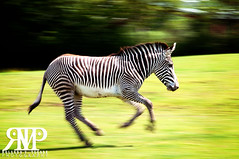I really do not like when people mess with colors or contrast. I really don't like filters (either on camera or digitally)....
I would think that there would be a pretty short list of professional photographers who did not use filters or other devices in their toolkit in which they enhanced their images. As mentioned previously, Ansel Adams was a master not only under the hood of his large format camera but in the darkroom as well. His books are full of examples of how he dodged and burned relentlessly until he got the recipe just right for ‘developing’ his prints. And it did not stop there. His choice of film, film developer, print paper, print developer, camera filters, enlarger filters all were part of the recipe that he created to give him the image, not of what his eyes ‘saw’ but of his ‘visualization’ (Adams’ term) of the scene. Many of the other early ‘master’ photographers and contemporary top photographers (insert lots of names here) all used filters and various film, paper and developer options, and recently the advent of digital editing systems, depending upon their image requirements. The great photographer Vittorio Sella even went as far as to draw human figures by hand with a grease pencil on one of his famous panorama images near K2.
I’m not begrudging you at all in your choices and beliefs. It’s a personal choice and I respect that. So when does a photographer go too far? I think that’s the same argument as how much risk would you take when you hike/climb or what level of danger would you subject your children to or how much do you carry in your backpack or do you use hiking poles in the summer? They are all personal choice questions and they all have a different answer depending upon who you ask. One person’s “too far” is another person’s “just right”. Kinda like the Goldilocks thing, you know?
Then there is the discussion on what the eye sees versus what the camera sees. How many times have you said or heard someone say “This picture didn’t come out right. It didn’t take it the way I saw it.” Guess what; the camera will rarely ever ‘see’ what you ‘saw’. Your eyes have the ability to see into shadows on a bright sunny day while still seeing clearly into the bright areas of a scene. The optical parts of our brain have a higher dynamic range than our cameras do. Our brain can fill in gaps of what you cannot fully recognize visually. Our brain can accentuate some features/colors and play down others. Our brains add emotional content to the image which a camera cannot do. For SLR camera users, the camera doesn’t always see what we think it is seeing because more times than not, we are taking a photo whose aperture setting is ‘stopped down’ from the ‘wide open’ setting that you are seeing through the lens.
Creating a photographic image is an artistic process and it doesn't stop when you press the shutter button. The camera is just another tool in your toolkit that is used in the overall process. How much you want to use those other tools is up to you. Again, it's about personal choices.
I don't think there is a right or wrong answer when it comes to art. But remember, photographers have been altering their images since photography was invented. Just because it's digital, doesn't mean it's new!
JohnL





